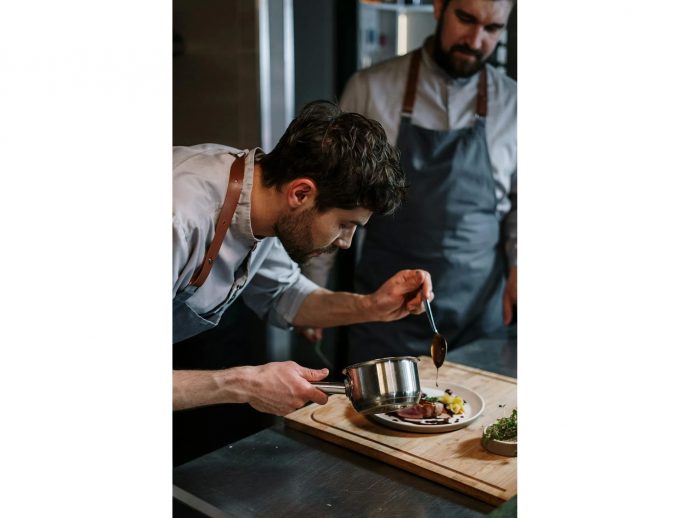Categories more
- Adventures (17)
- Arts / Collectables (15)
- Automotive (37)
- Aviation (11)
- Bath, Body, & Health (77)
- Children (6)
- Cigars / Spirits (32)
- Cuisine (16)
- Design/Architecture (22)
- Electronics (13)
- Entertainment (4)
- Event Planning (5)
- Fashion (46)
- Finance (9)
- Gifts / Misc (6)
- Home Decor (45)
- Jewelry (41)
- Pets (3)
- Philanthropy (1)
- Real Estate (16)
- Services (23)
- Sports / Golf (14)
- Vacation / Travel (60)
- Watches / Pens (15)
- Wines / Vines (24)
- Yachting / Boating (17)
A Beginners Guide to Sous Vide Cooking
Published
08/14/2024Are you looking for a delicious and easy way to cook your meals? Look no further than sous vide cooking! Sous vide is a popular cooking technique and is perfect for beginners! Here, we'll provide a beginner's guide to sous vide cooking, so you can start creating mouthwatering meals immediately.
What Is Sous Vide?
Sous vide cooking is a method where food is sealed in plastic bags and then cooked in a water bath at a precise, controlled temperature. The term "sous vide" comes from the French phrase meaning "under vacuum."
This cooking approach cooks food evenly and maintains its moisture and flavor. It also prevents the food from overcooking and ensures a consistent final product. This slow-cooking method is getting more popular due to its convenience and accuracy.
What You'll Need
Sous vide can be intimidating if you've never tried it before. However, preparing amazing food shouldn’t be scary, even if you’re a beginner cook. Here’s the equipment you need to get started with this cooking method.
An Immersion Circulator
An immersion circulator is the most crucial piece of equipment here. It's a water heater that keeps the temperature steady in your pot of water throughout the entire cooking process.
Cambro Containers
Cambro containers are a type of storage container, usually made of polycarbonate, ideal for this cooking process. They are heat-resistant, non-porous, and leak-proof.
A Cast Iron Skillet
A cast iron skillet is an excellent tool for this cooking technique. Before serving, you can use it to sear and finish steaks, vegetables, and other proteins. The skillet can also withstand the high temperatures.
Zipper-Lock Freezer Bags
Sous vide cooking requires that you seal your food in an airtight bag before submerging it in water. Zipper-lock freezer bags are easy to seal. You can try resealable freezer bags for added protection.
Vacuum Sealer
This tool seals zipper-lock freezer bags by removing air using a motorized pump. You can find various models available online and at most kitchen supply stores.
Step-By-Step Cooking Process
The following is a step-by-step guide to the sous vide technique:
Step 1: Gather Ingredients and Equipment
Start by gathering all the ingredients and equipment for your recipe. This includes the proteins and vegetables, seasonings and sauces, and the equipment, such as a pot, immersion circulator, vacuum sealer, containers, and tongs.
Step 2: Seal Ingredients
Vacuum seal the ingredients in airtight bags designed for sous vide cooking. Be sure to leave space in the bag to allow the ingredients to move around while they cook.
Step 3: Prepare the Water Bath
Fill a large pot or container with water and attach the immersion circulator to the side. Set the temperature and timer for the desired cooking time and allow the water to come up to temperature.
Step 4: Add Ingredients
Add the sealed bags of ingredients to the water bath and submerge.
Step 5: Cook
Allow the ingredients to cook for the desired time without overdoing it. Cooking food for extended periods at low temperatures can be dangerous, as bacteria can grow fast in the "danger zone" (40°F to 140°F). The longer the food stays in this temperature range, the more dangerous it becomes.
Step 6: Remove Bags
When cooking is up, remove the bags from the water bath and cut them open using tongs.
Step 7: Serve
Serve the ingredients with desired accompaniments, such as sauces or side dishes.
Tips and Tricks
Here are some tips and tricks for getting started:
- Preheat the sous vide machine before placing food inside for even and consistent cooking.
- Use a vacuum sealer to ensure that food cooks evenly and flavors are not lost.
- Use a timer so that food cooks for the proper amount of time.
- Add herbs, spices, and other flavorings to create more complex flavors during the cooking process.
- Avoid overcrowding the container or bag, as this can lead to uneven cooking.
- If you want to thicken sauces or gravies, add a few tablespoons of cornstarch or other thickening agents to the bag before cooking.
Related Questions
What Is the First Thing I Should Sous Vide?
When first trying sous vide cooking, a steak is the first thing to start with. Using this technique allows you to make a perfectly juicy, tender steak that's bursting with flavor. You can also use the tender meat in other dishes like easy beef stew or fajitas.
What Are the Disadvantages of Sous Vide?
Cost: This cooking method requires specialized equipment, such as an immersion circulator or a water oven, which can be expensive.
Time: While sous vide cooking allows for precise temperature control, it also requires long cooking times.
Safety Issues: There is a potential for foodborne illness if the food is not cooked to the proper temperature and time.
Do Bacteria Grow in Sous Vide?
Yes, bacteria can grow in sous vide cooking. Follow instructions and practice safe food handling for food safety.
Conclusion
Sous vide is a convenient and precise way to cook food. This cooking method requires specialized equipment and takes longer than traditional cooking methods. Yet, it is worth the effort because it ensures perfect results.















